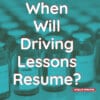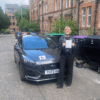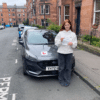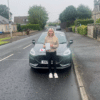Nervous About Driving?

When people feel this way they come up with their own solutions, such as avoiding certain routes on journeys, or maybe just refusing to drive at all! Unfortunately these methods might not really fix things for you and will restrict you in your personal life, and possibly work situations if driving is required. Let’s try and break down common reasons and hopefully find a solution you can use to feel better about driving on the roads.

5 Common Reasons People Are Nervous Drivers
- You just don’t feel that you are at the same level as the other drivers on the road.
- You may have been involved in a road accident at some point.
- You learnt to drive a long time ago and there has been a big gap since passing your driving test and now driving alone on the road.
- You have lost all confidence because a person or driving instructor criticised your driving.
- Your circumstances may have changed and you may now have children and feel an increased sense of responsibility when they are in the car.
Above are just a few common reasons that affect people. Regardless of what causes you to feel nervous they all have the same effect. Feeling anxious gets you worked up, and only has a negative affect. This will cause your driving level to reduce significantly and more and more mistakes to happen. According to Lisa Dorn, who is an Associate Professor in Driver Behaviour, when a person feels anxious and nervous, physiological changes take place in their brain. Let’s break that down.

The Science of Feeling Anxious and Nervous About Driving
When nervous and anxious the physiological changes taking place in your brain can result in the following:
- Your brain starts to fire more rapidly sending information all around your brain and body
- Perspiration and breathing levels increase along with muscle tensions
- Your ability to process hazards decreases which increases the chances of making a mistake
- When you do make a mistake or get something wrong it feels even worse
These points will feel very relatable if you are feeling nervous or anxious about driving. The other thing that comes into it is your personality and how you respond to stress. However, don’t worry this can all be improved and developed.
How do you fix it? What is the Solution?
Start with a few simple things that you can apply straight away which should be able to reduce you feeling nervous about driving, lower the anxiety levels instantly.
6 Ways To Start Conquering The Nerves
All in the planning
Plan your journeys using local knowledge. Try to select a route that you feel comfortable with and know. If a tricky feature on the road exists, such as a roundabout or a place with multiple lanes, have a look at that area with Google Street View to familiarise yourself with the lanes and the layout of the road. You can also use Google maps and change the view to a satellite view to look from above.
Choose your moment
If possible try to choose a time of day that it won’t be busy on the roads. Avoid main commuting times. Some road users can sometimes be fed up with their day and less helpful to other road users. This is when you might have someone sounding their horn or getting aggressive over the smallest of things. If you are able to avoid these people then that will absolutely help with your nerves.
Reduce the pressure
Take your time, try to build in extra journey time so that if you take a wrong turn or can’t find a parking space where you originally thought you would then you still have plenty of time.
Extra Practice
If you have an area in your driving that you feel that you need some extra help with get in touch with a driving instructor (find a local one to you here) and arrange some lessons to develop that area. Extra development/lessons in other areas is really common. People pay lots of money for personal trainers at the gym, or extra golf lessons or take various courses to develop their skills. This should be the same with driving.
YouTube “how to” videos
There are so many videos explaining things to do with driving on YouTube. It is a great source of information and is continually developing. You will be able to find things explained in different ways and hopefully find any areas that you are not as confident with. Have a look at the channel I currently have when you actually look at driving. The same scenarios occur repeatedly and learning how to react to them will boost your confidence.
Mistakes will happen
Accept that small mistakes will happen and use them in a positive way. Learn from them and you will be ready for that same scenario in the future as it is very likely a similar situation will occur. Don’t worry though you will be ready.

Common things on the road people feel nervous about and how to deal with them.

Busy Junctions
It is really common to start to feel nervous when you arrive at a busy junction. As you sit there and notice that there aren’t really any obvious gaps to go, and that there is a queue of traffic forming behind you, naturally your anxiety levels will start to increase. Add to this the person behind might drive their car very close to yours, they might sound their horn and you can maybe even see them in your rear view mirror looking at you. Horrible isn’t it! I don’t think anyone is going to be relaxed in that situation.
How to deal with it
Safety is your priority. You can only go once you can see that it is clear to go. Traffic tends to move in blocks and there is always something breaking it up such as traffic lights, pedestrian crossings or a bus stopping. This will create a safe space for you at some point – you just need to wait. Try to ignore the driver behind you, you don’t need to look in your interior mirror while sitting waiting; it isn’t going to help you. If you need to slowly edge forwards at the junction to increase your visibility then do so.You won’t be there forever and the more times you do it the easier it will get. Also you won’t always have a horrible person sitting behind you in traffic, most people are patient and will see that you can’t go so pressuring you isn’t going to solve anything.

Busy Roundabouts
Roundabouts are usually the hardest thing to grasp when learning to drive. So many things happening at once, lanes, positions, signals. The things people usually worry about are what if I pull out in front of someone, or I end up in the wrong lane. In the same way as arriving at a busy junction you might need to wait for a while and, again, have pressure from motorists behind you.
How to deal with it
Try to plan early, long before lanes start to divide, smoothly reducing your speed on approach will help massively. By slowing down you will be able to process everything much more efficiently, you will notice if there are any extra signs or road markings and have plenty of time to respond to them. By doing this you will find that you aren’t as nervous or anxious when arriving at the roundabout. Again, just like the junctions scenario, you only want to go when you feel safe. If you need to take a little bit of extra time do so. If the roundabout is a spiral roundabout remember that once you have found your lane if a new line forms on your right, you go around it don’t cross it. You can have a look in this video there is a good example at the 5 minute mark
Remember if you end up in the wrong lane and go the wrong way it doesn’t matter. You can always turn in a safe place and come back to the roundabout and try again, usually on the second attempt you will know the roundabout layout and be even more prepared.
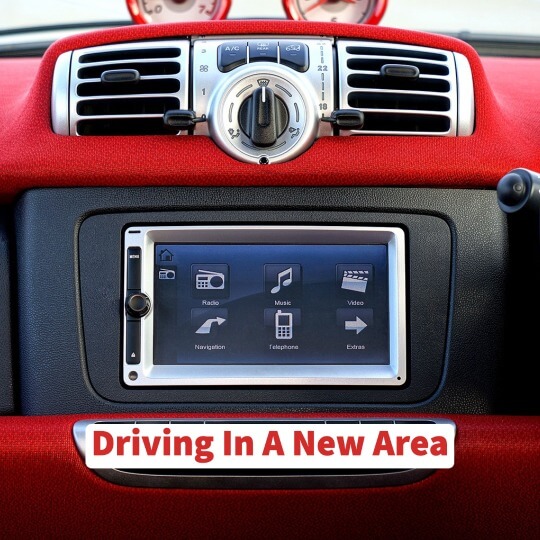
Driving in a new area
This can be difficult as your local knowledge won’t help you and when a road has complex layouts there can be a lot to try and process all at once.
How to deal with it
The first thing is to accept that you might take a wrong turn and if you do you will be able to sort it somewhere safely after. Use of a satnav if you have one can help to keep you right as to what lies ahead. Again just like the roundabout situation if you spot a complicated bit of road coming up smoothly slowing your car down will give you enough time to look at road markings and road traffic signs. This will seriously reduce your anxiety as you will know what’s coming and hopefully confirm that you are in the right place. It all takes practice and through time it will definitely get easier. As I mentioned earlier, it is the same scenarios that pop up time and time again.

Driving with children
Imagine driving along with a small child in their car seat in the back of the car. They decide that they are unhappy about something and start crying. They might get louder, unfortunately, they don’t understand that you are approaching the roundabout that you absolutely hate and they don’t realise how much concentration driving takes.
How to deal with it
As before, safety is your priority here. Your child is safely strapped in and, as long as you deal with the roundabout safely, you can pull over after in a safe place and sit for as long as you like. It’s difficult, but try to ignore your child at this point, try not to turn around as this will distract you from what is happening ahead. Once children are old enough to understand, start explaining how much concentration you need when dealing with busy junctions, roundabouts and so on. Explain that them being quiet at these times really helps.
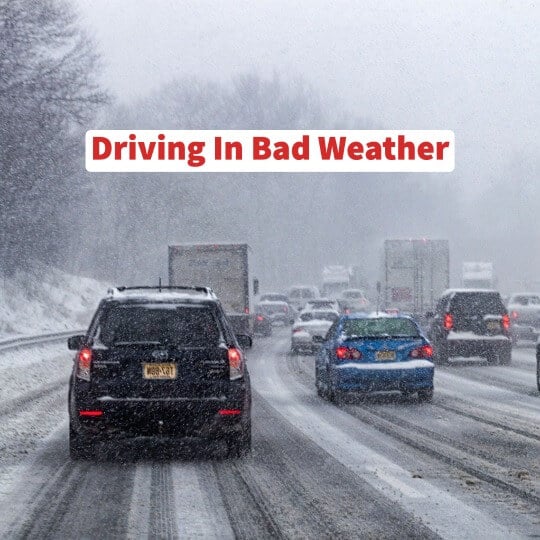
Driving in poor weather such as rain, snow or fog
In Scotland, especially Edinburgh, these conditions are very common and definitely add another level to driving. Imagine driving in very heavy rain, you can’t see that well and there is a big van driving very close behind you. This would make anyone nervous. Unfortunately it happens far too often.
How to deal with it
I’m sure you all remember from sitting your driving tests or learning how to drive that wet/snowy weather increases the overall stopping distance. In the scenario above there are a few things that you need to think about. If there is a lot of spray from the wet road coming off the vehicle ahead you might not be able to see as much as you would like, this means if there is a situation ahead you might be a little slower at spotting it. When the road is wet if you do need to slow down or stop quickly then there won’t be as much grip. And then to top it off if you do slow down quickly the person in the big van behind you might bump into the back of you. By increasing your gap with the vehicle in front you will be able to see more, and if a situation develops ahead you will be able to slow down or stop but the important bit is you will be able to do this smoothly. This cuts the risk of the person behind you bumping into you. Keeping yourself safe. If the person behind is really close and causing you to feel nervous then if there is a safe place on the road ahead pull in to let them pass. This would be worth doing as it isn’t going to feel nice with them close behind you.
In Conclusion
You will be feeling less nervous about driving in no time at all
Driving takes lots of practice to master. You can drive the same journey over and over again, however, you will encounter a different volume of traffic each time and throughout the years lots of unusual circumstances. This all helps with your continual development. Don’t be afraid to ask for help whether you contact a driving instructor or if you have a partner who could let you drive more this would be very beneficial. Just take everything one journey at a time and you will be feeling great in no time at all. You will get there. Good luck!


